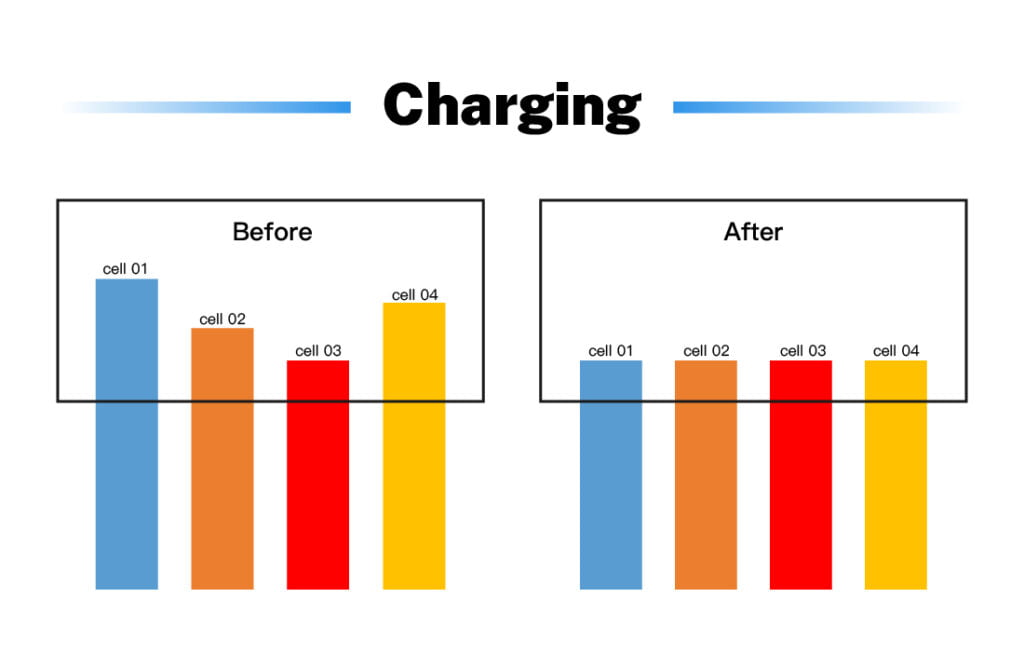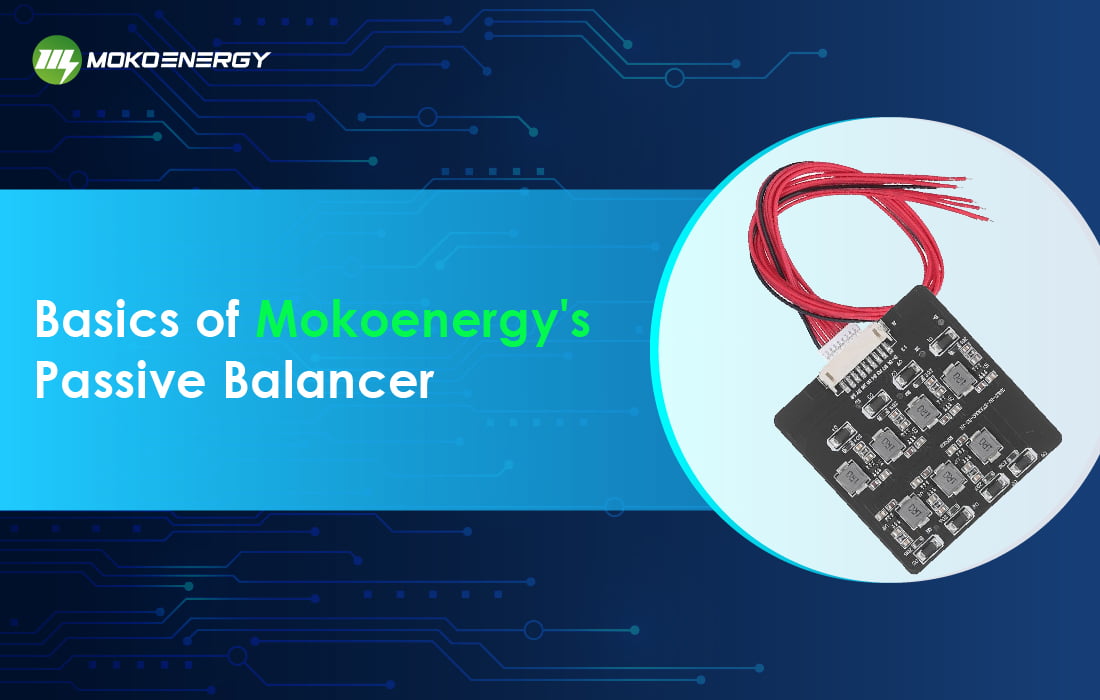If you have a lithium battery pack in series, you have to balance it for better performance, then the battery balancer comes into play. The passive balancer is a type of battery balancer and it is to equalize the state of charge(SOC) of cells to guarantee the efficiency of the battery. Compared to the active balancer that we have introduced in the previous blog, the passive balancer has its distinctive characteristics and benefits. Then, let’s have a look at the passive balancer.
What Is Passive Balancer?
The passive balancer is a built-in device in BMS. Generally, it can only operate during charging. It is used to dissipate the excessive charges of higher voltage cells by a bleeding resistor. The resistor controls the cell’s current flow since the resistor’s resistance value affects the balancing capability of the balancer.
Regarding the method of resistor for passive balancers, it can be classified into fixed shunting or switching shunting resistor.
Fixed shunting resistor: The fixed shunting resistor is connected in parallel to each cell and works as long as the cell’s voltage exceeds the threshold. When the voltage is back to the normal level, it shuts off.
Switching shunting resistor: When the voltage of cells is beyond the threshold, the switching shunting resistor is connected to a switch, such as MOSFETs, to dissipate the energy. The switch will be turned off when the voltage of the cells falls to a safe level.
How Does a Passive Balancer Work?
Different cells in a battery pack may age and degrade at different levels per their age, so cells may have different capacities and charge or discharge at different speeds.
When the cells are charging, the balancer will dissipate the excessive charges of fully charged cells as heat until other cells are also charged. Moreover, the balancer will operate only when the current flow exceeds the charging power of certain cells.

Why does it not balance when discharging? Once the weak cells reach the cut-off limit of the battery, the management system will shut down the discharging process of the whole battery to protect the battery from over-discharging. That’s why the dissipating device——the passive balancer isn’t feasible in the situation of discharging. What’s more, the remaining energy in other cells is not discharged and utilized with a balancer installed.
What Does a Passive Balancer Benefit?
Next, let’s probe into the benefits of the passive balancer.
- Lower cost: The passive balancer is more cost-effective and simpler in that it does not need additional hardware or software. So it is more suitable for those low-power applications.
- Easy implementation: Saving time and cost in installation with simple circuitry.
- Extended lifespan: Maintaining the charge with longer longevity and sound reliability.
- Safe and reliable: The balancer can minimize the hazard of leakage, explosion, and overcharging which may cause a fire.
- Enhanced performance: The battery can perform better after balancing and stabilizing the voltage level.
The above benefits of the passive balancer reflect its unique functions in the management system.
Conclusion
Cell balancing has an important bearing on the functionality of the whole battery, ensuring the performance and life expectancy of the battery pack. The passive balancing can effectively equalize the battery pack by dissipating the energy of cells through the resistor. It also has its own distinctive benefits and suitable applications. Mokoenergy holds sophisticated technologies in the innovation of BMS and balancing modules, aiming to offer better services for our customers. So please contact us if you have any requirements for the passive balancer.
More reading about the passive balancer:






